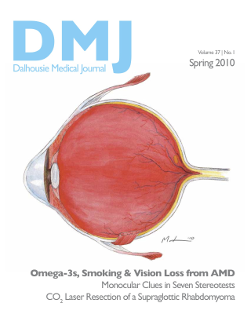Monocular Clues in Seven Stereotests
DOI:
https://doi.org/10.15273/dmj.Vol37No1.3861Abstract
Purpose: There have been numerous reports with evidence detailing the presence of non-stereoscopic or “monocular”clues in commonly used stereoacuity tests. The purpose of this study was to quantify the influence of monocularclues in the Titmus, Randot®, Randot® Special Edition, Randot® Preschool, Lang, Lang II, and Frisby stereoacuitytests. Stereoacuity testing is typically performed and/or interpreted by eye care professionals and other health/occupational professionals.
Methods: Two separate prospective studies were conducted. The first assessed the monocular responses of 100subjects aged 8 to 67 with normal stereoacuity, and no previous exposure to any of the seven tests administered.The second assessed the monocular responses of 33 subjects aged 8 to 65 with longstanding, manifest, horizontalstrabismus of 20 prism diopters or greater, on the aforementioned stereotests.
Results: Monocular clues were found to be present for the normal group on the Titmus (61%), Randot® (6%), Randot®Special Edition (5%), Randot® Preschool (7%), Lang (13%), and Lang II (37%). Monocular clues were found to be presentfor the strabismic group on the Titmus (100%), Randot® (9%), Randot® Special Edition (9%), Randot® Preschool (12%),Lang (3%), and Lang II (27%). There was no monocular identification for either group on the Frisby stereotest, butthere was minimal binocular identification by a subject with manifest strabismus.
Conclusion: Monocular clues were present for both the normal and strabismic group on 6 of the 7 stereotestsinvestigated. Based on these findings the authors conclude that caution must be used when interpreting patientresponses on the 7 aforementioned stereotests.
Downloads
Published
How to Cite
Issue
Section
License
Authors who publish with this journal agree to the following terms:
- Authors retain copyright and grant the journal right of first publication with the work simultaneously licensed under a Creative Commons Attribution License that allows others to share the work with an acknowledgement of the work's authorship and initial publication in this journal.
- Authors are able to enter into separate, additional contractual arrangements for the non-exclusive distribution of the journal's published version of the work (e.g., post it to an institutional repository or publish it in a book), with an acknowledgement of its initial publication in this journal.
- Authors are permitted and encouraged to post their work online (e.g., in institutional repositories or on their website) prior to and during the submission process, as it can lead to productive exchanges, as well as earlier and greater citation of published work (See The Effect of Open Access).


